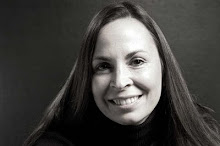Last week, I had the pleasure of returning to my alma mater,
Wesleyan College, as a guest composer/playwright. In celebration of a centennial year, the college collaborated with the Morning Music Club of Macon, Georgia to present a musical review of our show, "
Jane Austen's PRIDE AND PREJUDICE, A Musical".
One of my responsibilities during the week was to give a speech before the opening performance. I was delighted that after the show, I was asked to submit my speech to the Morning Music Club for their archives. I called the speech, "Encouragement and Appreciation" and share it with you now.
*****
It is a great pleasure to be with you tonight, and to
celebrate with you the centennial year of the Morning Music Club. It is an honor to be here.
Throughout an artist’s life, there are several things an
artist must be given. Two of the most
important things are encouragement and appreciation.
About thirty years ago, the Morning Music Club encouraged me
by presenting me with a scholarship … and tonight I am encouraged even more by the
fact that you have included my work in this celebration. The very act of producing my work, validates
my artistic life and I feel appreciation.
It is amazing to me to think how I performed on this stage
for the first time in 1983 for my Junior Recital. Throughout my artistic life, I have always
held great reverence for the stage and what a stage represents.
Some of you who knew me when I was 18 know that my earliest
dream was to be performing artist, a pianist, and … in the years that followed,
my life as that performing artist dramatically transformed into who I am today,
a composer, a playwright, and an artist educator. I now have the joy of working professionally within
three artistic disciplines: music, theater and the visual arts.
I marvel at how all the artistic disciplines are connected,
how they inform each other, and what they teach me.
The visual artist uses tools and materials— paintbrushes,
pencils, a blank canvas, clay, paint, etc.
Through her work, the artist transforms those materials into a work of
art, and when she is finished with a piece, the work becomes
tangible--something lasting. The cycle
of her creative process is complete when her work is displayed within a frame on
a gallery wall or placed upon a pedestal.
The act of displaying the work is remarkable because an audience
viewing the work can visit and revisit the work again and again, judge it,
criticize it, admire it, and decide whether or not to develop a relationship
with that work of art through purchasing it or displaying it.
Within the other three artistic disciplines, this isn’t
possible. The work of the dance, music
and theater remain within the minds and memories of its creator, the performer
and within the mind of the audience. The
dancer dances, the musician plays an instrument, the thespian tells a story
before our eyes. For the creative
artist, it is the live performance that completes the artistic process as a
composer, a playwright and a choreographer..
While recordings and videotapes are possible, they are mere shadows of
their work.
Like the visual artist, each of these three disciplines
requires a platform or a place to display.
And, that platform is a stage. This
is why a stage is so important. This is
why the stage in Porter Auditorium means so much to me.
Tonight, you will have a window into my life as a
composer/playwright through a musical review of
“Jane Austen’s PRIDE AND PREJUDICE, A Musical” , which is a work I share
in collaboration with Lindsay Warren Baker.
When Lindsay and I began writing the show in 2000, we wanted
to create a show that we wanted to see.
Throughout its development, the show has seen several incarnations …
productions, workshops, and staged readings.
We have researched, written and rewritten, cut songs, added songs,
rewritten songs. And today, we are under
commercial option with producers in London who are working toward a West End
production.
Throughout our process, Lindsay and I have generated and
amassed lots of material. In celebrating
the centennial of the Morning Music Club, we prepared and created a production
especially for Wesleyan College and its
Music Department. (As a side note) We
thought it serendipitous too that 2013 marks the 200th’ anniversary
of the publication of Austen’s novel … Pride and Prejudice. So … The show you will see tonight is a
musical review of our work. It draws,
from both current and earlier work—work that helped create the commercial show
we have today.
Many many thanks to Nadine and Ellen—all of the young women
involved, and everyone who made tonight possible.














